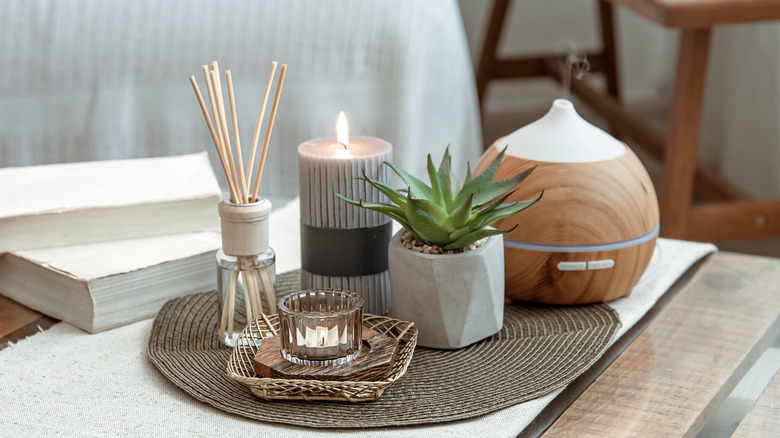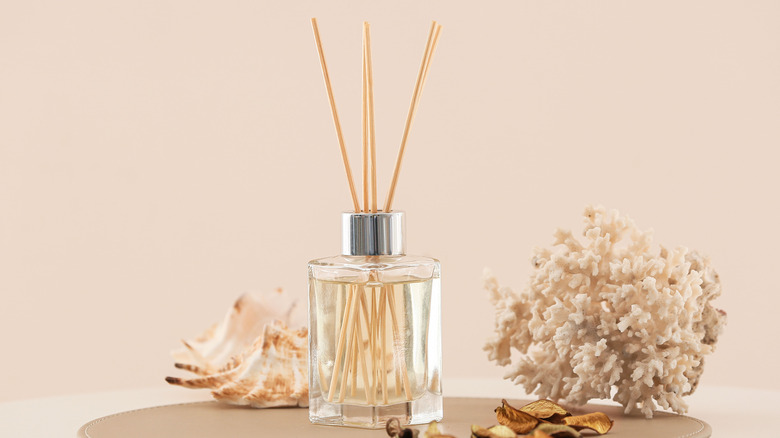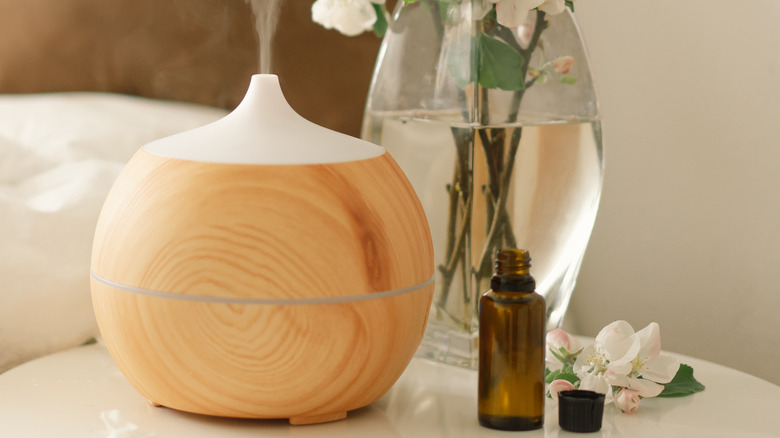Reed Diffusers Vs Oil Diffusers: Which Is Best For You?
An underrated aspect of feeling good is smelling good. That scented garbage bags and toilet paper exist should be proof enough. For our bodies, we have an array of perfumes and lotions. For our houses, we have aerosol air fresheners, plug-ins, and diffusers. But air fresheners may not be a healthy option.
The National Capital Poison Center reports aerosol air fresheners release volatile organic compounds (VOCs) into the air. These VOCs can combine with ozone to create even more pollutants. So, you'll be breathing in more than just a tropical summer breeze.
Diffusers, on the other hand, deliver fragrance via natural essential oils. These oils are typically used in aromatherapy and have been shown to activate areas of your brain associated with behavior, emotions, and memory (via Healthline). Certain essential oil combinations can even bring peace and relaxation. However, when it comes to circulating these natural fragrances throughout your space, both reed diffusers and oil diffusers are popular options. We're here to help you break down the two methods so you can know which is best for your needs.
Reed diffusers
First up are reed diffusers, which distribute your favorite fragrance and add a bohemian touch to any room. They typically consist of a glass bottle or jar and absorbent reeds, according to Essense of Harris. The oil travels up the reeds and transfers into the air, blessing the atmosphere with a lovely scent. With its simple makeup, it's rather easy to create your own reed diffuser at home.
No electricity or flames are required for your reed diffuser to work, making it a safe and cost-effective option. You can leave your reeds unattended as they do their job since they require very little maintenance (via Whole Home Scenting). You simply need to stir your fragrance oils every week. As the oil sits, it can separate and deliver a less intense scent. To keep your reed sticks moist, they should be flipped every three to four days and swapped for fresh ones every month. Reed diffusers are best for freshening smaller spaces and are a convenient and energy-efficient aromatherapy option.
Oil diffusers
Unlike reed diffusers, oil diffusers use electricity to release fragrances. According to Aromatech, there are four types of electric diffusers: nebulizing, ultrasonic or humidifying, evaporative, and heat. These require pressurized air, vibration, evaporation, or heat to transform the oil into a mist or gas that travels throughout the room.
With an electric diffuser, you have control over the intensity of the fragrance (via Amara). There are even diffusers with lighting and timer options so you can wake up to your favorite scent. However, Aromatech warns that heat, evaporative, and ultrasonic diffusers can reduce the intensity of essential oils since transforming the oil to infuse the air makes it lose potency. Also, because these diffusers require power, you'll have to keep them plugged in to work around the clock. Electric oil diffusers are ideal for scenting larger rooms, adding light to your space, and taking advantage of scheduling functionality.


